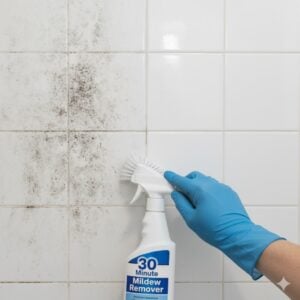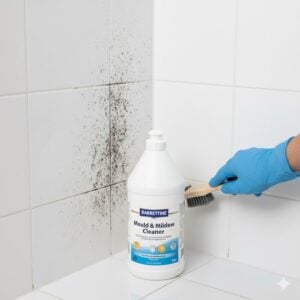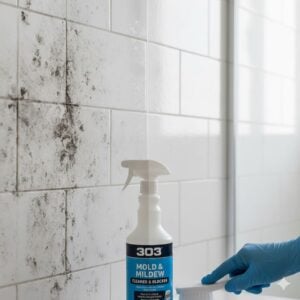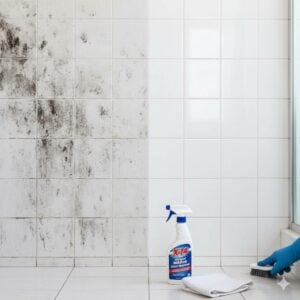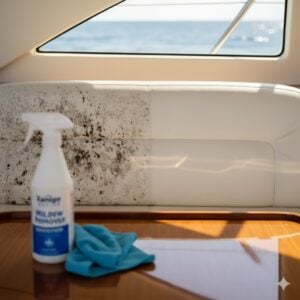If you’ve noticed dark spots creeping along your walls or ceiling, especially after rainy weather or heavy AC use, chances are—it’s mold. In the UAE, where humidity levels and indoor condensation are high, mold on walls is more common than most people realize. It doesn’t just look bad—it can smell musty, cause allergic reactions, and even damage your home if left untreated.
The good news? You’re not alone, and there are safe, effective ways to deal with it. In this guide, we will walk you through why mold appears on walls, how dangerous it really is, and what steps you can take to get rid of it for good—either by yourself or with the help of professionals like us at Bio-On UAE.
Table of Contents
Toggle1. Why Mold Grows on Walls
Mold thrives in warm, moist environments—and unfortunately, that describes many homes across the Emirates. From bathrooms with poor ventilation to bedrooms where AC units leak without being noticed, the conditions are ideal for fungal growth.
In most cases, mold on walls happens when moisture builds up behind or inside the wall surface. This could be from condensation (especially near windows), minor roof leaks, plumbing issues, or even just a lack of airflow in corners behind furniture. Over time, those tiny spores land on damp areas and begin to spread—quietly at first, then visibly.
If you’ve ever noticed green or black patches forming on your ceiling, wall corners, or near your air conditioner—especially during the more humid months between November and March—you’re seeing the result of that invisible moisture buildup. And once mold sets in, it doesn’t go away on its own.
2. Is Wall Mold Dangerous?
While a small mold spot might seem harmless, it can pose serious health concerns—especially for children, elderly family members, or anyone with asthma or allergies. Mold spores don’t just sit still on the wall. They spread into the air, where you can inhale them without realizing it. This can lead to symptoms like coughing, skin irritation, watery eyes, and persistent fatigue.
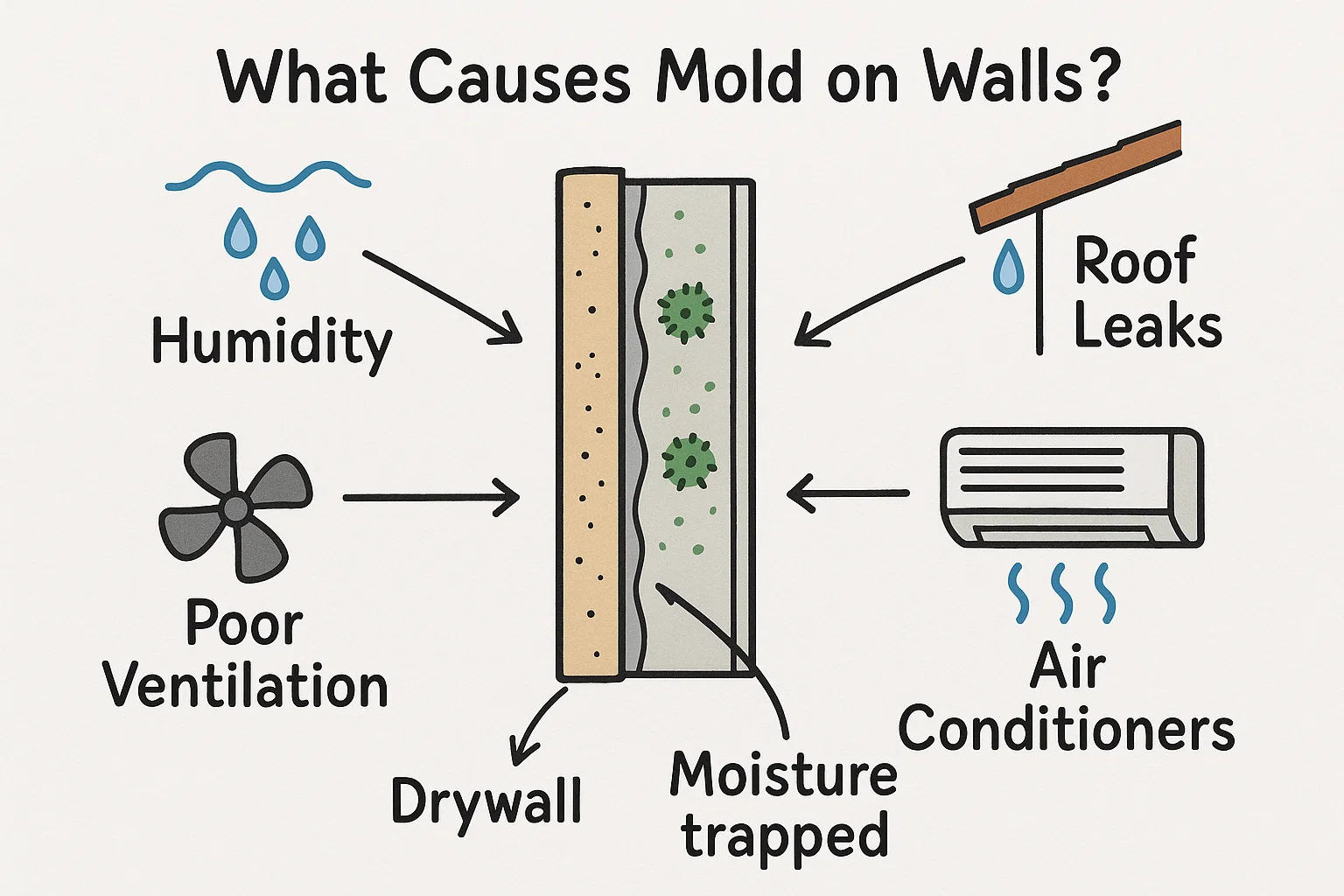
In more serious cases—especially with black mold—exposure over time can contribute to respiratory infections and worsen existing health conditions. And even if you’re not sensitive to mold physically, the strong, musty smell it gives off can affect your comfort and concentration, especially in bedrooms or offices.
Beyond health, mold can damage paint, plaster, wood, and even wallpaper. It can weaken wall structure and cause stains that are hard to remove. So while it might start as a small blotch behind the sofa, ignoring it could mean dealing with repainting or costly repairs later on.
That’s why understanding the risks—and acting quickly—is so important when dealing with mold on walls.
3. How to Remove Mold from Walls Safely
Seeing mold on your walls can be unsettling—but with the right approach, you can tackle it before it spreads. Start by opening windows to improve ventilation and putting on gloves and a mask. Mold spores can become airborne when disturbed, so it’s important to protect yourself while cleaning.
For light surface mold, a mix of white vinegar and water is a safe, natural option. Spray it onto the affected area and let it sit for at least an hour before wiping it clean. Vinegar kills around 80% of mold species and is especially useful on painted walls or tiles. Another option is hydrogen peroxide (3% solution), which can be applied with a spray bottle and scrubbed gently using a soft brush or cloth. Avoid using bleach on drywall, as it may damage the surface without penetrating deep enough to eliminate the mold roots.
Whatever you do, never scrape dry mold. This spreads spores through the air, making the situation worse. Instead, dampen the area before wiping, and use disposable cloths if possible. Once you’ve cleaned it, dry the area thoroughly and monitor it for any signs of return. A fan or dehumidifier helps speed up the drying process.
Keep in mind, these home remedies work best for small, early-stage mold patches. If the affected area is larger than 1 square meter, keeps coming back, or if the wall feels soft or smells strongly, it’s a sign of a deeper issue. That’s where professional help becomes essential.
4. When to Call a Mold Remediation Expert
Sometimes, mold is more than skin deep. If you’ve tried cleaning it and the stains return, or if you smell musty air but can’t see visible mold, the problem may be hidden behind the wall or under the paint. At this point, calling a certified mold remediation service isn’t just a convenience—it’s the safest option.
Experts like us at Bio-On UAE use specialized tools to detect moisture levels inside the wall, locate hidden mold colonies, and apply treatments that eliminate both the spores and the cause. Our team uses HEPA vacuums, anti-fungal fogging, and eco-safe biocides to clean thoroughly without damaging your property or exposing your family to harsh chemicals.
We also help you identify the root cause—whether it’s an AC leak, roof seepage, or humidity problem—and offer clear advice on how to prevent future growth. The process is quick, discreet, and tailored to your space. You don’t have to figure it out alone. If you’re dealing with mold that won’t go away, click the contact button on the right-middle of this post and let us help you restore your space safely.
5. Tips to Prevent Mold on Walls Coming Back
Once you’ve removed mold from your walls, keeping it away is the next big step. Prevention isn’t just about cleaning—it’s about making your indoor environment less inviting for mold to grow in the first place.
Start by addressing moisture. Even small leaks can trigger mold growth, so check your AC units, water pipes, and ceilings for any signs of seepage. If your home tends to feel humid—especially in bathrooms or closed bedrooms—consider investing in a compact dehumidifier. It helps pull excess moisture out of the air before it settles on surfaces.
Airflow also plays a big role. When you place large furniture like beds, wardrobes, or sofas flush against walls, air can’t circulate. That trapped space becomes a perfect place for dampness and mold to form. Try leaving at least 5 cm between the wall and your furniture to allow for better ventilation.
Lastly, keep walls clean and dry. After showers, open bathroom windows or switch on the exhaust fan. Wipe down tiles regularly. In high-risk areas, you can even use mold-resistant paint, which acts as a protective layer against future outbreaks.
These habits may seem small, but over time, they can save you from serious repairs—and help you feel more at ease in your home.
Conclusion
Mold on walls is more than just an eyesore—it’s a sign that your living space needs better care, and a reminder of how easily moisture can turn into a bigger issue. But with a clear understanding of what causes it, how to treat it safely, and when to bring in expert help, you can keep your home clean, healthy, and mold-free.
Whether it’s a one-time patch or a recurring problem, we at Bio-On UAE are here to help. If you’re ready to stop mold from taking over your walls, click the contact button on the right-middle of this post and let’s take care of it—professionally, safely, and permanently.









